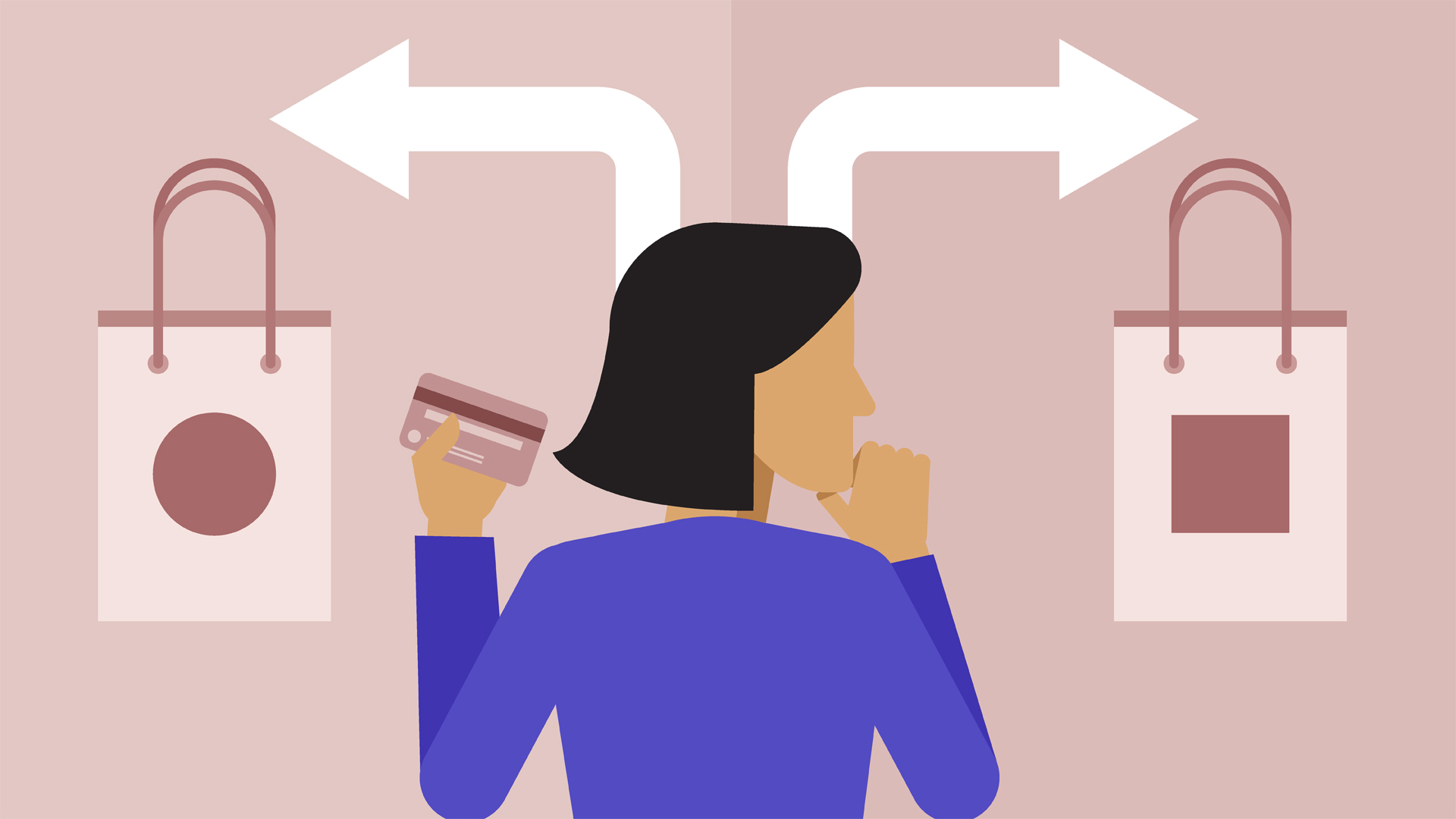What Products and Services Sell Best in a Recession?
Editor’s Note: The following article was originally written by Bob Bly. It has been updated and rewritten to address current events and provide further value. Please note that the opinions and views shared here may or may not reflect the original author’s views.
What are recession proof products? What do people keep buying – even when the economy is down?
Hint: This is not a trick question.
The answer is the one that immediately popped into your head when I asked it: The products and services that sell best in a recession are the cheaper ones.
If your business is going to survive – and thrive – throughout the current economic downturn, that DOESN’T mean you have to slash prices and cut your profit margins!
A recession-proof product is NOT one with a huge markdown.
You don’t need to do that to yourself – in this guide we’re going to go through:
- How Your Customer’s Behaviour Changes During A Recession (& How To Stay In Front Of It)
- 3 Business Pivots To Get MORE Buyers In A Recession
- How To “Lower The Barrier To Entry” To Increase Revenue
- Positive Projection (& Turning Challenge Into Opportunity)
It’s true that times are tough, and many businesses are struggling – if you follow these strategies you’ll find that it’s NOT compulsory to lose money during a recession.
How Your Customer’s Behaviour Changes During A Recession
Milton Hershey (the chocolatier) said that his business was recession-proof because he sold an affordable product.
He reasoned that, even if a person couldn’t afford a new car or vacation in tough times, they could ALWAYS afford a nickel for a Hershey’s chocolate bar.
In the last major recession of 2008, the Hershey company increased advertising budgets by 23% – and as consumers switched from premium chocolates to the affordable alternative, Hershey’s net income rose by over $40 million.
The same thing happened to McDonald’s after the GFC – worldwide sales rose by 7.1%.
What does this mean for YOUR company?
Well, if your audience actually wants to buy your product (be it a chocolate or hamburger)…
And they can still purchase it during a time of recession (sorry if you own cruise ships or a restaurant – we’re not allowed to buy from you!)…
They’re going to KEEP buying products exactly like yours – even when times are tough.
They might not be willing to spend as much to get the best quality – but if a consumer WANTS your product, they’ll buy it.
In my freelance copywriting and information marketing businesses I have found the same thing:
There is a real consumer preference for lower-priced goods and services during an economic downturn.
That DOESN’T mean you should apply huge discounts to your higher-ticket items to encourage people to buy.
In fact, you might have been under-charging in the first place! (Which we talk about in more detail here and here)
In my online publishing business, my low-priced products are e-books selling in the $19 to $79 range.
My mid-range products are DVD and audio CD albums selling in the $100 to $150 range. And my high-end products are multimedia programs selling in the $300 to $1,000 range.
In recent months, my customers have clearly been telling me that (a) they are worried about money, (b) they really appreciate my reasonable prices, and (c) for now, they prefer offers for low-priced products.
They are not asking for special discounts or “recession sales.”
They just want me to focus on offering products that sell for under $100, which seems to be the magic recession-proof price point for my market.
Whenever I advertise mid-range or high-priced products to my customer list, I always get at least one e-mail from a reader telling me she wants to buy the product… but can’t because she has lost her job!
Let me make the point again: People still WANT to purchase from business owners like you and me!
We can take advantage of that by deploying…
3 Business Pivots To Get MORE Buyers In A Recession
If we know that your customers still WANT to buy from you…
Then it makes sense for us to create offers and recession-proof products that are easy for them to buy. Here are 3 ideas and strategies you can model and adopt in your own business:
Expanding Your Product Line (Especially With Lower-Priced Products)
If you review everything you offer in your business, it’s likely that you’ll find one (or more) items that can be ‘segmented’ into smaller products or services.
For example, a business with an online information course about acquiring customers using Facebook advertising and webinars could ‘segment’ that offer into two separate courses: Facebook ads OR webinars.
For a coach or consultant who DOES want to learn how to get more customers from social media (even when the economy is bad!) learning either of those skills is important…
And it’s much easier for them to buy HALF of that original course (say, the segment about Facebook ads) for half the original price than it is to front up the full fee.
When things start improving financially – or even after the customer has had a chance to get some progress and results from the ‘segmented’ purchase – they’ll probably be ready to buy the other half of your main offer.
Similarly the webinar system taught in the original course could be turned into a lower-price ebook.
If you’re thinking about creating more products, we’ve got a guide to the top 4 new products you SHOULD be selling here!
Next we can…
Offer ‘Tomorrow Buyers’ More Free Content
Recent research suggests that the average customer in your business will need 23 touch-points (or communication via email, social media, video or a podcast) before they’re ready to buy from you.
That number is probably higher now that we’re in the grips of a potential recession.
NOBODY can ever be expected to buy from you the moment that they first realise that you exist…
And now that there’s tension – between financial insecurity and the customer’s insatiable desire to buy the things that they want – your customers are more selective and prudent than ever about where they spend their money.
What that means is that your audience is going to take MORE time to consider whether they should part with their hard-earned (and possibly increasingly scarce) money to buy what you have…
They’re putting off the decision to enter their credit card on your website until they’re absolutely, positively certain that they’re making a the right choice…
People aren’t buying stuff on a whim – they’ll listen to your offer and sleep on it…
They’re TOMORROW buyers.
So it’s YOUR responsibility to show them as much proof as you can – through free content, testimonials and better communication throughout the buying process – that supports their impulse to buy from you.
Specifically, you should be demonstrating three things a LOT more:
- You ARE able to help them get the result that they’re looking for
(The easiest way to do this is to give them small, hugely-actionable pieces of advice that get them one step closer to their goal) - You SPECIFICALLY help people in their exact situation get those results
(The more you can demonstrate how relevant and tailored your offer is to people in the same situation as them, the easier it is for a potential customer to believe that it’ll work) - People JUST LIKE THEM are capable of getting that result
(Show them testimonials and case-studies of people who have faced the same challenges and hardships they have – and still come out on top)
At best you’ll make a lot more sales NOW by increasing the amount of content you distribute…
And at worst you’ll attract the attention of a lot more ‘Tomorrow Buyers’ who will be ready to business with you when money is less of an issue.
We’ve put together the Ultimate Guide to Content Marketing for Entrepreneurs in this article here.
This works ESPECIALLY well if you can couple it with…
Bundle Packages Into “Value Discounts”
The worst thing you can do in a recession is slash the price of a $2,000 offer down by 75%.
No matter what you do AFTER the economy returns to normal, people won’t forget that – and you’ll never sell that product or service for it’s full value ever again.
We’ve already covered one angle to enticing potential buyers to do business with you – ‘segmenting’ those higher-priced products…
The other thing that you can do (depending on what your business offers) is bundle multiple lower-priced items into a larger package…
And offer a solid discount on that offer.
It’s far better to encourage buyers to take valuable discounts by – hypothetically – taking five $50 products and selling them as a package for $150.
Next (depending on your business model), you can:
‘Lower The Barrier To Entry’ To Increase Revenue
This works especially well – and I’ll give you an example from my own consulting business:
Normally I charge $500 an hour to work with clients, with a ten-hour minimum payable in full in advance.
That $5,000 expense is affordable in normal times – less so during an economic crisis…
BUT (if I haven’t made the point strongly enough) people still want my advice during a recession, just like they still want to purchase the same products that your business makes.
I can lower the ‘Barrier To Entry’ to a coaching package like that by offering new clients 90 minutes of my time for a flat fee of $750.
If you’re good at math, you’ll notice that I haven’t discounted by hourly rate at all – I’m simply maing it easy for people to START working with me for a lower initial commitment.
I picked 90 minutes deliberately – not only is it enough time to give prospects a taste of how my advice can benefit them, but it sneaks in at a price point under $1,000.
That’s within the comfort zone of a new client who is feeling a pinch from a recession (and ESPECIALLY one who is on the fence between being a ‘Tomorrow Buyer’ and taking up my full consulting package).
More important, this offer shows prospects that I empathize with their desire to cut back on spending and have designed a service to accommodate their smaller budgets.
Interestingly what usually happens is that, after reviewing this offer, prospects call me to get a quote for the full service they really want. And more often than not, that’s what they choose to go with.
So while I don’t actually do a lot of copywriting and consulting under this arrangement, it makes prospects more comfortable with me as a vendor who respects their budget concerns and limitations. And that’s been keeping my freelance business active and profitable.
There’s one more big idea I want to leave you with:
Practice Positive Projection (Turn Challenge Into Opportunity)
Not EVERYBODY loses money in a recession.
You can create recession proof products.
Right now supermarkets are doing HUGE business with their online delivery services. Puzzles and board games are selling out, Amazon is doing more business than ever before, and medical supply companies are overwhelmed.
Perhaps the most important thing to remember in times of a recession is to practice positive projection…
Which is the OPPOSITE of assuming that nobody has any money everyone is feeling the pinch and nothing you do will protect you from taking a hit.
For every person who loses their job and can’t afford your pre-recession prices, there’s going to be someone else who is doing just fine (or really well) financially and REALLY wants to buy from your company.
It doesn’t matter whether you’re a relationship counsellor or a real estate agent: practice positive projection.
If you’ve never sold anything high-ticket before, you can use this Sales Strategy Session Formula.
Make it possible for every potential customer to buy something really expensive from you – because you just don’t know who is in your pipeline.
Open up a high-ticket offer, add in more upsells and downsells, follow-up harder and more often with people who are buying from you.
While it’s true that the cheaper products and services sell better during a recession, that doesn’t mean that everything else shuts down.
Know how your customer’s behaviour changes during a recession – and modify your offers and product suite to match that demand.
Segment your offers, bundle them together, lower the barrier to entry to make it easier to do business with you…
And don’t forget: It’s not compulsory for all your customers to participate in the recession, so your business doesn’t have to participate either.
[Ed. Note: Bob Bly is a freelance copywriter and the author of more than 70 books. To subscribe to his free e-zine, The Direct Response Letter, and claim your free gift worth $116, click here now.]





